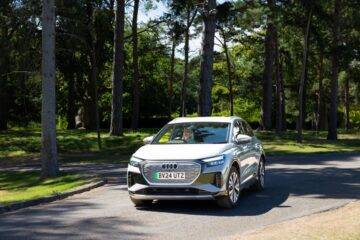Electric Cars For Disabled Drivers: Which Are Available In The UK?
Electric vehicles (EVs) are increasingly popular for their lower emissions and lower running costs, but how do they leverage assistive technology to increase accessibility for disabled drivers and passengers?
As advocates for ensuring the switch to electric is accessible to all, let’s explore how the future of the automotive industry is enhancing mobility and current options for electric cars.
Benefits of Electric Cars For Disabled Drivers
The Government’s ban on new diesel and petrol cars in 2035 as part of their plan to reduce CO2 emissions, shows that EVs are here to stay long-term. So what are their benefits?
Well of course electric cars get their power from a rechargeable battery rather than fossil fuels, so their smaller carbon footprint makes them a much greener and eco-friendly choice. Ultimately providing a sustainable solution for motorists.
Electric cars are also typically cheaper to run and maintain. Electrically charging your car can cost significantly less than filling up the tank with fuel, compensating the slightly higher upfront cost of purchasing an EV.
Another significant benefit is the adaptability of EVs for accessibility. Many people mistakenly believe that adapting an electric car for disabled is not possible or more expensive than modifying traditional fuel vehicles. However, our wide range of adaptations including driving aids, easy vehicle access and mobility device loading solutions, can all be installed on EVs and Hybrids, and at the same price as petrol or diesel cars.
Types of Electric Cars Suitable For Disabled Drivers
There are many EV makes and models available including hatchbacks, estates, and SUV’s. However, there aren’t really many electric Wheelchair Accessible Vehicles (eWAVs) on the market, which is why it’s important to look at the accessible features of standard EVs.
With advancements in modern automotive technology, car manufacturers are leveraging assistive technology to increase the overall accessibility of cars as standard. Features such as, powered tailgates, electrically adjustable seats, parking assist and in-car voice assistance not only improves the comfort for all drivers, but opens up possibilities of car travel for disabled drivers and passengers who previously didn’t have the option.
Although these advancements have been made, accessible car adaptations still play a critical role for wheelchair users and disabled people to ensure a standard EV meets their individual requirements. Thankfully EVs are easy to adapt with driving aids such as hand controls and pedal adaptations, enabling those who struggle or are unable to operate the standard accelerator and brake in a car to still drive. As well as these, there are a wide range of adaptations that can also be fitted to an EV or Hybrid to meet a vast range of needs.
Available Models

Of course the EVs on the market at the moment aren’t suitable for everyone’s needs, so what are the current trending electric cars for disabled?
According to MotaClarity, a news and resource platform for disabled motoring, they have shared the most popular Motability cars for the month based on how often they’re being searched and viewed*:
- Volvo XC40 Hybrid
- Volkswagen ID.4 Electric
- Mercedes-Benz EQA Electric
- Renault Scenic Electric
- Jeep Avenger Electric
- Volvo EX30 Electric
- Lexus UX Electric
- Skoda Enyaq Electric
- Ford Explorer Electric
- Peugeot 3008 Hybrid
2024 continues to be a breakthrough year, with the increased offering of EVs in showrooms which we will continue to see grow in 2025 and beyond. So stay tuned as we provide further updates as new cars are released and the automotive industry evolves.
*Correct as of October 2024
Support & Incentives
Supporting the transition to electric, there are a number of grants and financial incentives available for disabled people. The most popular is the Motability Scheme, which enables disabled people to exchange their mobility allowance to lease a new car.
The Scheme offers multiple affordable EVs to choose from and provides an all inclusive package that covers the cost of breakdown assistance, servicing, MOT’s, insurance and funding for a wide range of car adaptations. Motability also fits a home charge point at no extra cost when you lease your first EV. Find out how much a Motability car costs each month.
The Government also has certain vehicle allowances to provide additional financial support for disabled people such as vehicle tax exemption and reduction when purchasing a new car.
Considerations When Choosing an Electric Car
What we understand as key considerations when disabled drivers are looking for accessible cars, is the size of the boot as they often need space to store a mobility scooter or wheelchair, door opening height and width to aid with easier access into and out of the car as well as the built-in assistive technology.
Not only this but range and charging infrastructure should be taken into account to understand what type of electric vehicle will suit your lifestyle the most. How often are you taking trips? Are they short or long journeys? Do you have the option to have an at home charging point installed? If not, are there plenty of public charging stations local to you?
And of course like with any car search, outlining your budget from the beginning is a must to ensure you can comfortably afford your new car. Access to a car should improve your lifestyle, not hinder it.
Overall, 2024 has seen a huge boost in the amount of options of electric cars for disabled, and along with the ease to adapt them, the switch to electric is well and truly underway.
If you’d like to explore what accessible adaptations can be fitted to your electric car to make your journeys more comfortable, speak with us online or on 0800 288 4422.
If you want to find out more information about how motability funding works, we have a complete guide to take you through the process.